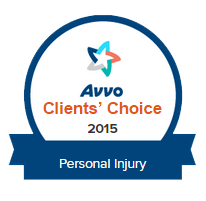When drivers negligently cause accidents due to traffic law violations and other reckless behaviors, passengers often stand to suffer serious injuries. The compensation that injured passengers may recover depends on various factors, including the collision circumstances, amount of available insurance coverage, and severity of injuries. A skilled Atlanta car accident lawyer can represent you throughout your personal injury claim or lawsuit and fight for the justice and compensation you deserve.
Car Accidents that Cause Passenger Injuries
Car accidents resulting from driver negligence can bring about severe injuries for passengers, and the following are some common examples.
- One common category is rear-end collisions. These occur when a driver fails to maintain a safe following distance and crashes into the car in front. This can be due to distractions, such as texting or talking on the phone, or simply not paying attention to traffic conditions.
- Side-impact collisions, also known as T-bone accidents, happen when one vehicle crashes into the side of another. These accidents often occur at intersections, typically when a driver runs a red light or stop sign or fails to yield the right-of-way. Passengers on the side of the collision can suffer serious injuries, including broken bones, internal injuries, and traumatic brain injuries.
- Head-on collisions are particularly dangerous and frequently result in severe injuries or fatalities. These accidents occur when a driver crosses the centerline or drives the wrong way on a one-way street. Common causes include distracted driving, impaired driving due to alcohol or drugs, and falling asleep at the wheel.
- Single-vehicle accidents can also result from driver negligence. These accidents include scenarios where a driver loses control of their vehicle, causing it to hit a stationary object, roll over, or run off the road. Factors contributing to single-vehicle accidents include speeding, driving under the influence, and distracted driving. Passengers in these accidents can experience injuries ranging from cuts and bruises to more severe conditions like broken bones and head injuries.
- Multi-vehicle pile ups are another dangerous category of car accidents. These often occur on highways and result from a combination of high speeds, poor visibility, and driver inattention. A single negligent act, such as sudden braking or lane-changing without signaling, can trigger a chain reaction involving multiple vehicles. Passengers in these accidents are at risk of severe injuries due to the multiple collisions and the potential for becoming trapped in the vehicle.
How to Prove Passenger Injuries in a Car Accident Scenario
Proving passenger injuries due to driver negligence in a car accident involves several key steps and types of evidence. It is crucial to establish that the driver’s careless actions directly caused the injuries that a passenger sustained.
- First, medical records are essential. After the accident, passengers should seek ongoing medical attention. Medical reports, doctor’s notes, and hospital records provide concrete evidence of the injuries. These documents detail the nature and extent of the injuries, the treatments received, and any ongoing medical needs. This evidence is critical in linking the injuries to the accident.
- Eyewitness testimony can also be valuable. Statements from other passengers, bystanders, or other drivers who witnessed the accident can corroborate the account of negligence. Eyewitnesses can describe the negligent driver’s behavior leading up to the accident, such as speeding, running a red light, or driving erratically. Their testimony helps to establish the circumstances that caused the injuries.
- Police reports are another important piece of evidence. When law enforcement responds to an accident, they typically create a report documenting the scene. This report includes details about the accident, statements from involved parties, and sometimes the officer’s assessment of fault. A police report that identifies a driver as negligent strengthens the case for passenger injuries.
- Photographic and video evidence can provide compelling visual proof. Photos of the accident scene, vehicle damage, and visible injuries can vividly illustrate the force of the collision. Dashcam footage or surveillance video from nearby cameras can show the driver’s actions immediately before the accident, offering clear evidence of negligence.
- Expert testimony from medical professionals and accident reconstruction experts can further bolster the case. Medical experts can explain the link between the accident and injuries, detailing how the trauma of the crash caused the passenger’s condition. Accident reconstruction experts can analyze the scene, vehicle damage, and other evidence to provide an expert opinion on how the accident occurred and who was at fault.
- Personal accounts from the injured passenger are also crucial. Detailed narratives describing the accident, the immediate aftermath, and the effects of the injuries on daily life can help humanize the case. These accounts can illustrate the pain and suffering experienced, making the consequences of the driver’s negligence more tangible to a judge or jury.
- Finally, evidence of financial losses, such as medical bills, receipts for medications, and documentation of lost income, can demonstrate the economic effect of the injuries. This financial evidence helps to quantify the damages that the passenger sustained due to a driver’s negligence.
Factors that Affect a Passenger’s Monetary Compensation Following a Car Crash
Several factors can influence the amount of monetary compensation an injured passenger may receive in a car accident case:
- Severity of Injuries – The extent and severity of the passenger’s injuries play a significant role in determining compensation. More severe injuries, such as TBIs, spinal cord damage, or multiple fractures, typically result in higher compensation due to the extensive medical treatment required, long recovery periods, and potential long-term disabilities.
- Medical Expenses – The total cost of medical treatment, including hospital stays, surgeries, medications, therapy, and ongoing care, directly affects the compensation amount. Passengers can recover expenses already incurred as well as estimated future medical costs related to the accident.
- Lost Income – If the passenger is unable to work due to their injuries, they may be entitled to compensation for lost earnings. This includes earnings lost during recovery, and any future earning capacity lost due to permanent injuries or disabilities resulting from the car accident.
- Pain and Suffering – Compensation for pain and suffering considers the physical pain, emotional distress, and mental anguish experienced due to the accident and injuries. There is no precise formula for calculating pain and suffering, but factors such as the severity of injuries, duration of recovery, and effects on daily life are taken into account.
- Loss of Consortium – In cases where injuries affect the passenger’s ability to maintain normal marital relations, they may recover damages for loss of consortium. This compensation recognizes the effect of the injuries on personal relationships and companionship.
- Property Damage – If the passenger’s personal belongings were damaged in the accident, such as clothing or electronic devices, they may be entitled to compensation for property damage.
- Punitive Damages – In cases of extreme negligence or misconduct by the at-fault driver, punitive damages may be available. These damages punish the at-fault driver and prevent similar intolerable future conduct.
- Amount of Insurance Coverage – The amount of available insurance coverage can also affect the total compensation amount. If the at-fault driver has limited insurance or is uninsured, it may affect the injured passenger’s ability to recover full compensation. The passenger’s own insurance policies, such as uninsured/underinsured motorist coverage, can sometimes provide additional compensation if the at-fault driver’s coverage is insufficient.
Litigation Options for Injured Passengers in Car Accident Cases
Injured passengers in car accident cases have several litigation options available to seek compensation for their injuries and losses. Understanding these options can help passengers and their attorneys determine the best course of action based on their specific circumstances.
- Trial – One option is to take the car accident case to trial. Trials involve presenting the case before a judge or jury, who will decide the outcome based on the evidence presented. During trial, both sides present arguments, witnesses testify, and evidence is presented to establish liability and the extent of damages. Trials can be lengthy and involve complex legal procedures, but they provide an opportunity for passengers to seek maximum compensation if negotiations or alternative dispute resolution (ADR) methods are unsuccessful.
- Arbitration – Arbitration is an ADR method where both parties agree to submit their case to an arbitrator, who acts as a private judge. The arbitrator reviews the evidence presented by both sides and issues a binding decision. Arbitration can be faster and less formal than a trial, and it allows parties to avoid the public nature of courtroom litigation. However, the outcome is generally final and may not be appealed except in limited circumstances.
- Mediation – Mediation is another ADR method where a neutral third party, the mediator, helps facilitate negotiations between the parties to reach a settlement. Unlike arbitration, mediation is non-binding, meaning either party can walk away from the process if a satisfactory agreement cannot be reached. Mediation encourages open communication and can be less adversarial than litigation, often resulting in a mutually acceptable resolution without the need for a trial.
- Negotiation/Settlement – Before pursuing formal litigation or ADR, injured passengers and their attorneys often engage in negotiation with the at-fault party’s insurance company or legal representatives. Negotiation involves discussing the case, presenting evidence of liability and damages, and attempting to reach a settlement agreement without going to court. Settlements can be reached at any stage of the litigation process, including before a lawsuit is filed, during pre-trial proceedings, or even during trial.
When deciding between litigation options, factors such as the strength of the evidence, the extent of injuries, the potential for compensation, and the willingness of both parties to negotiate should be considered. Each option has its advantages and potential drawbacks, and passengers should consult with their attorneys to determine the most appropriate strategy to achieve a favorable outcome in their car accident case.
Speak with an Experienced Car Accident Lawyer About a Possible Case Right Away

Like drivers, passengers in car accidents frequently stand to suffer very serious injuries. If you sustained injuries as a passenger in a recent car crash, a skilled Atlanta car accident lawyer can advocate for you at every stage of the proceedings. Your lawyer can file a claim with the appropriate insurance company on your behalf, negotiate that claim, or litigate your case to a fair resolution in court.




























